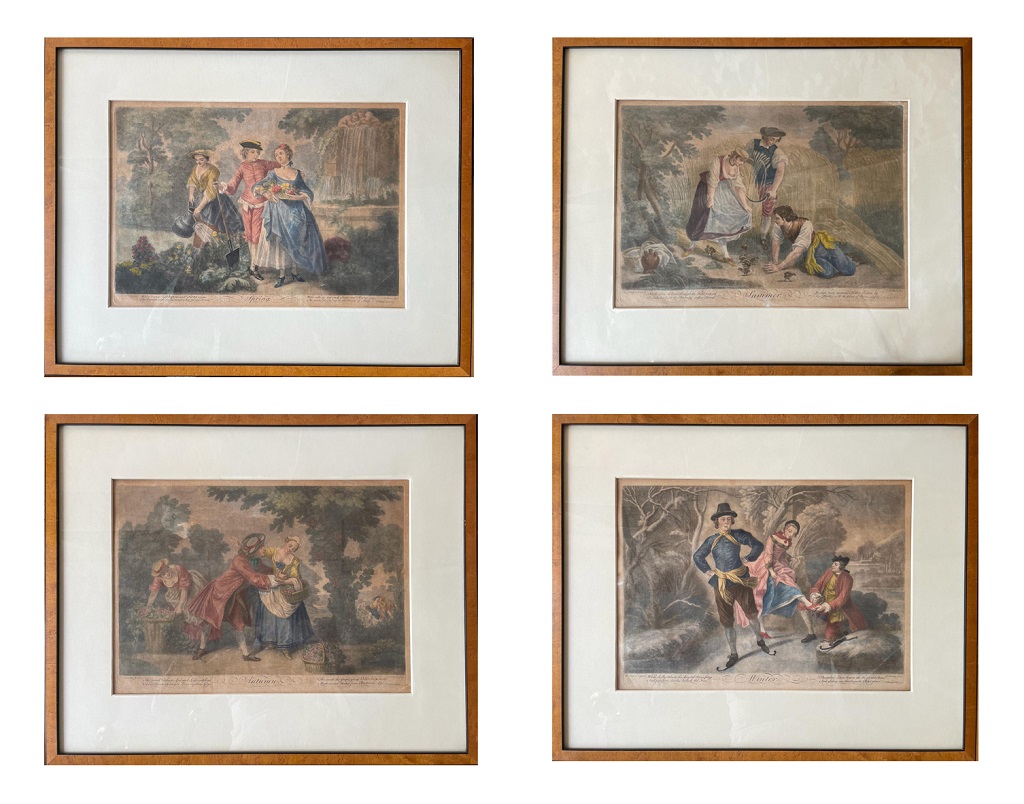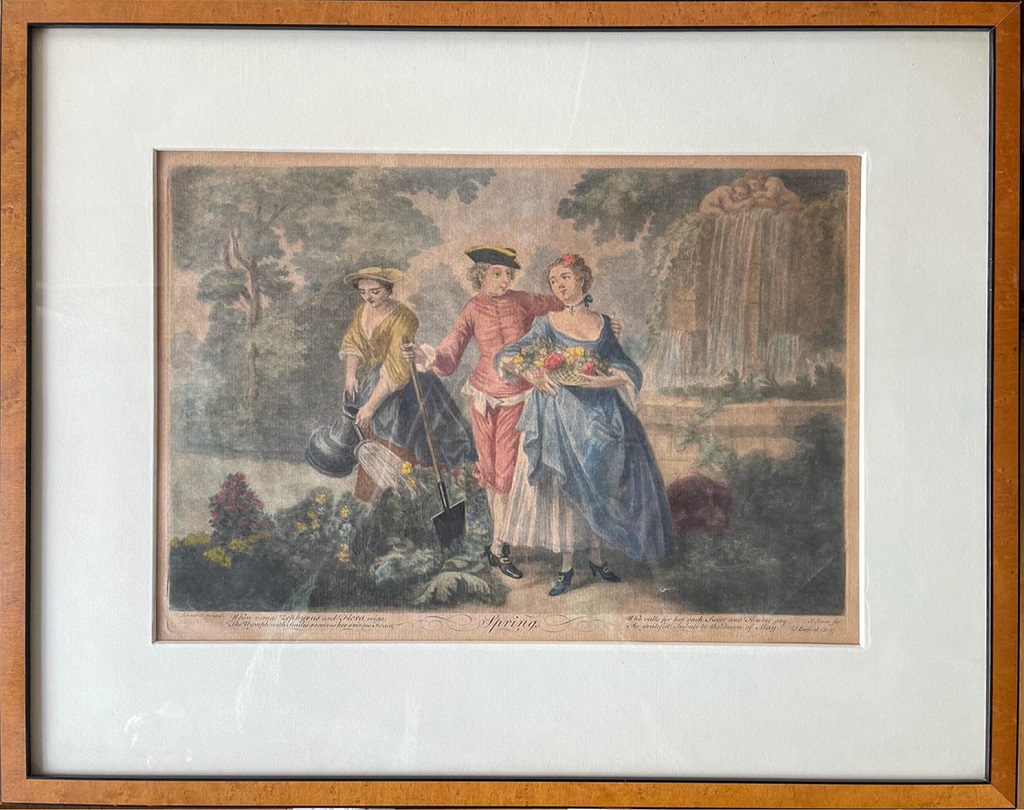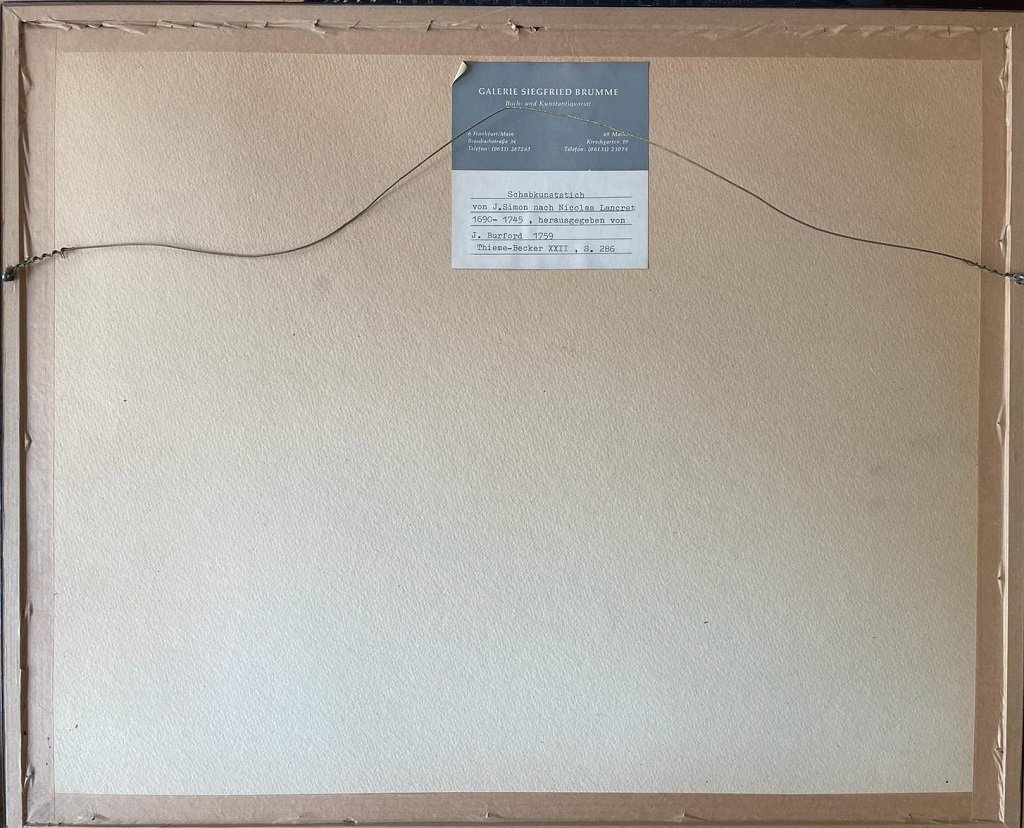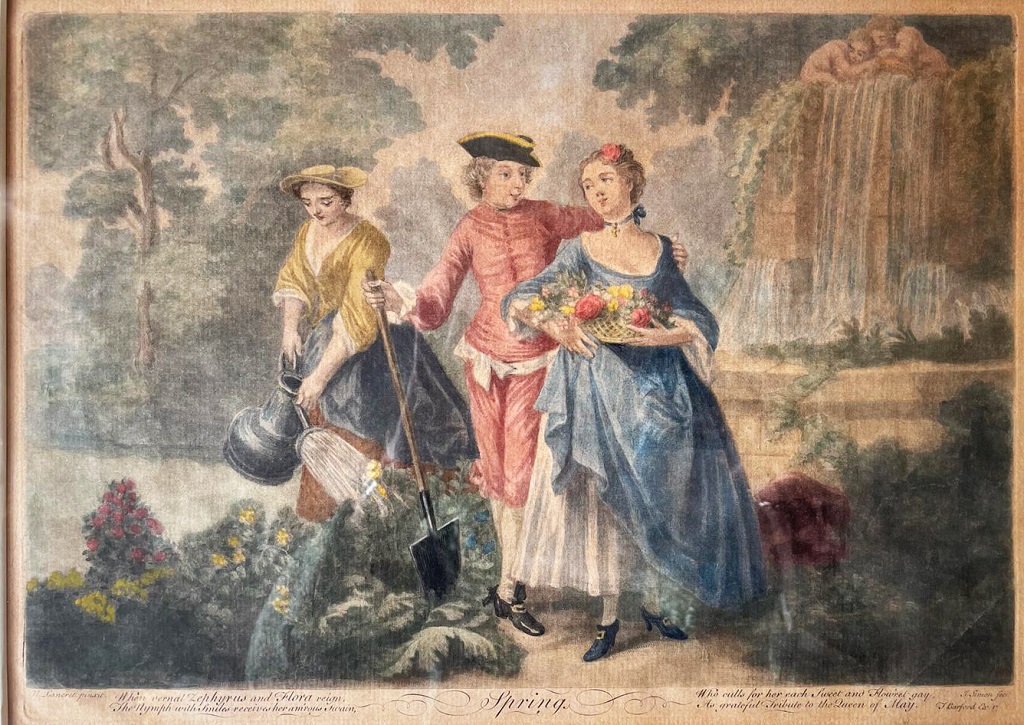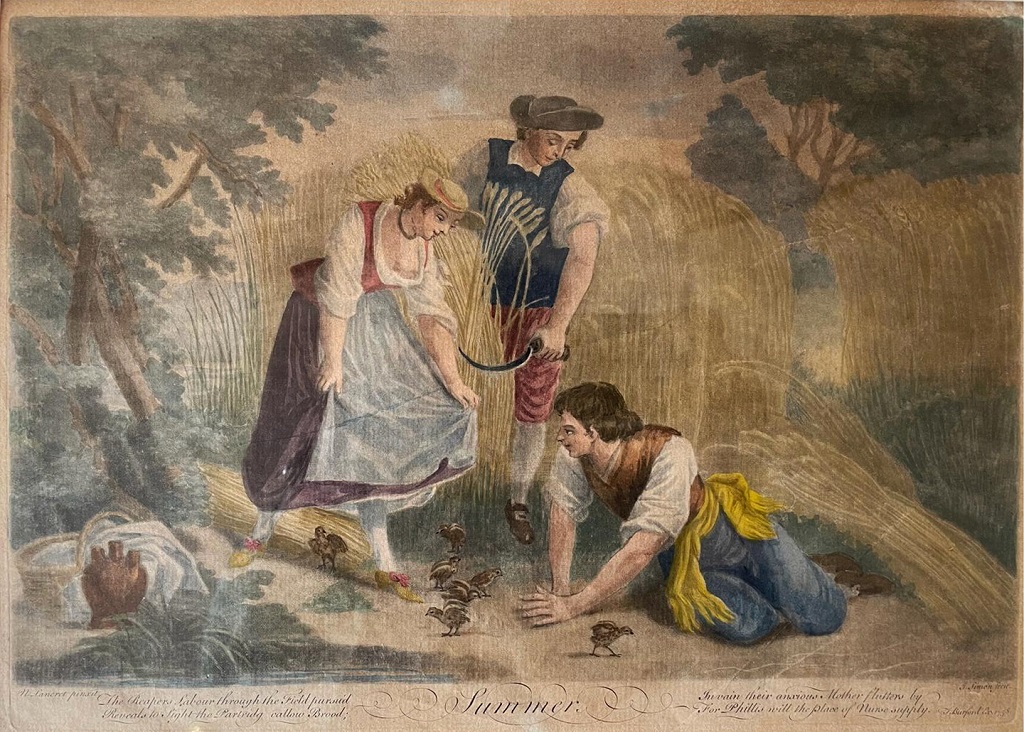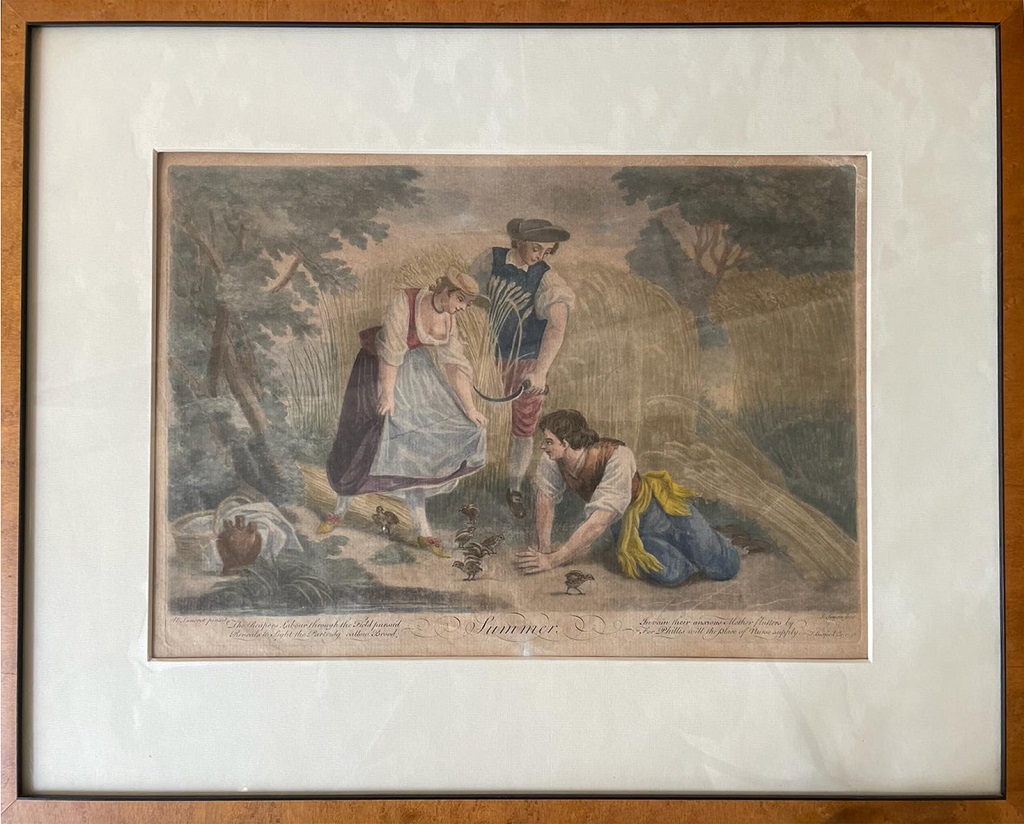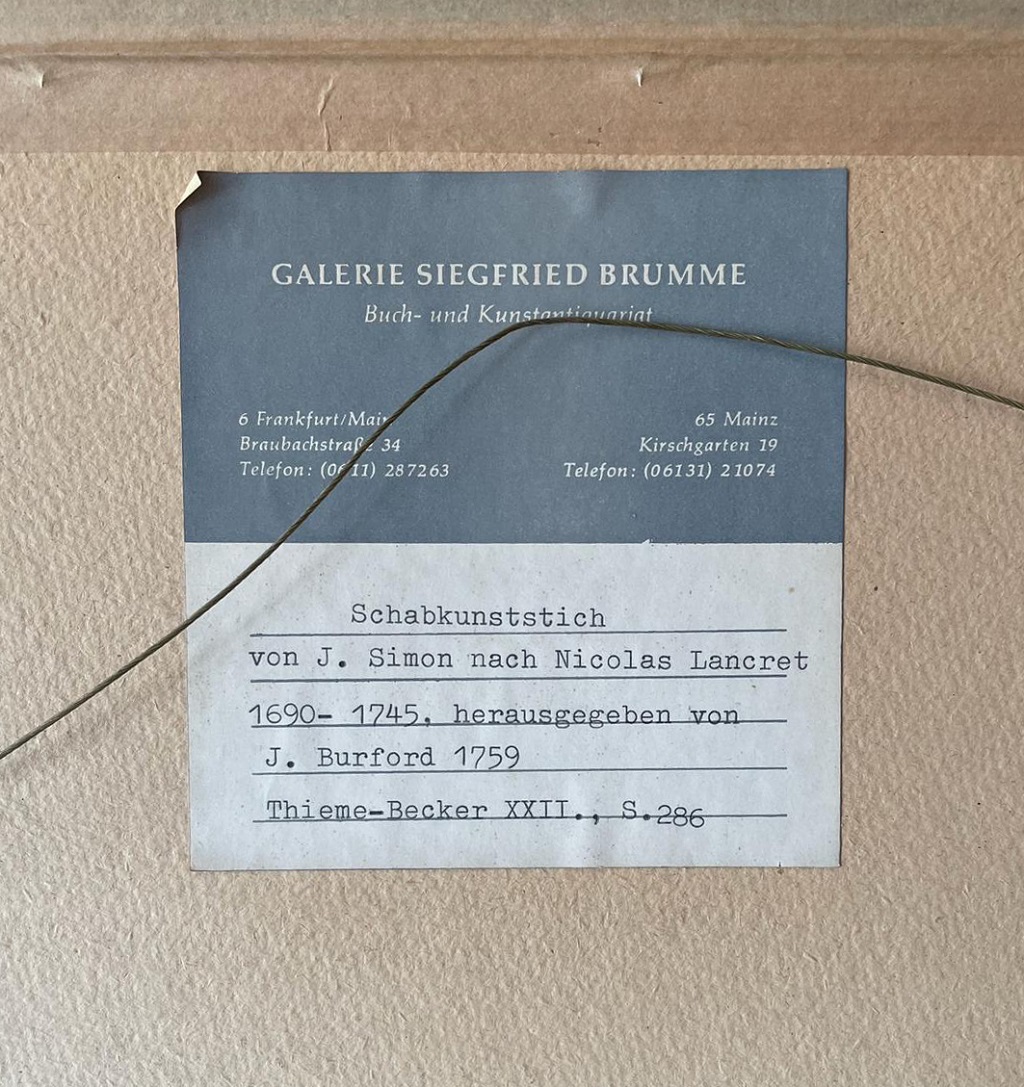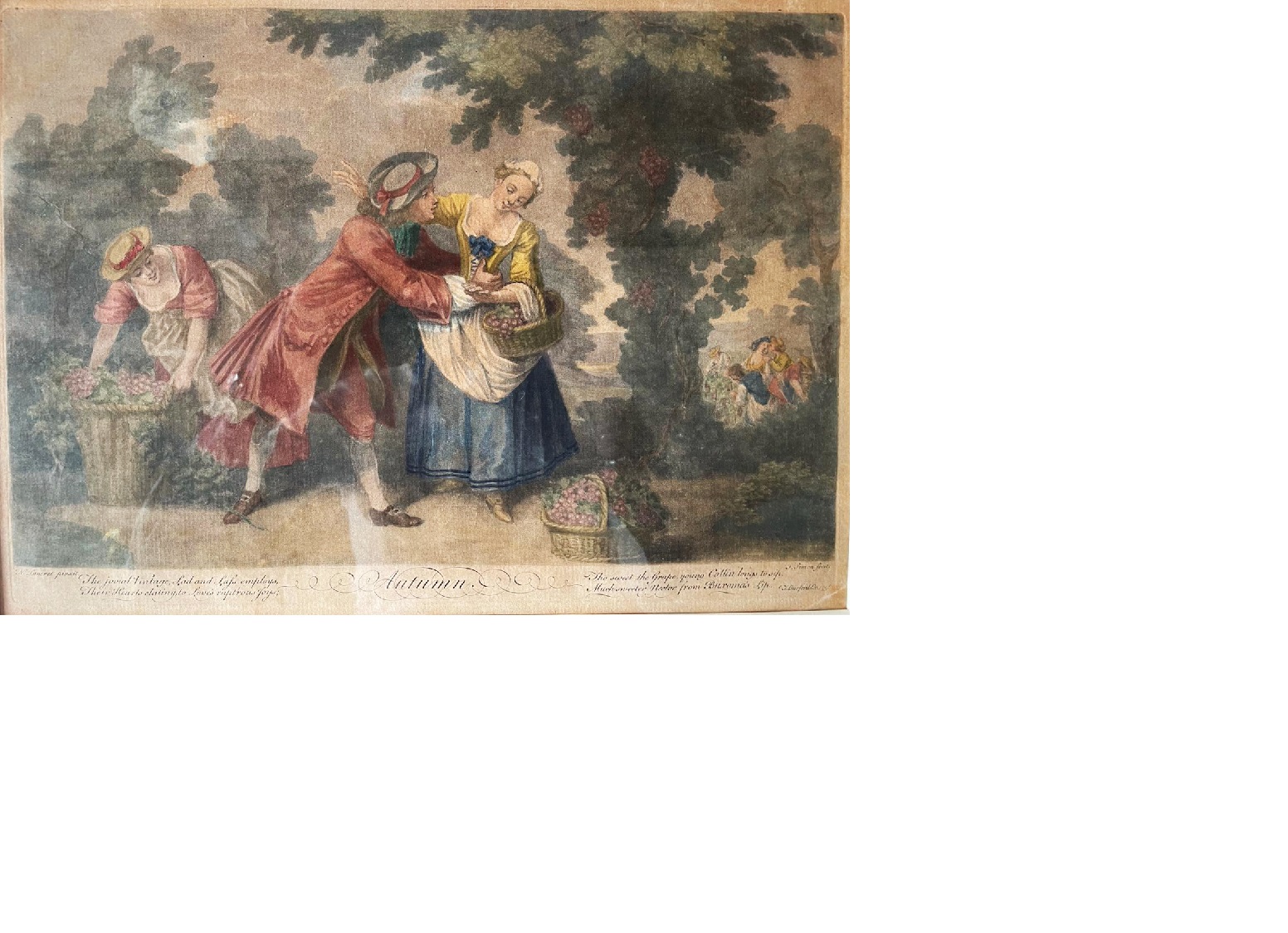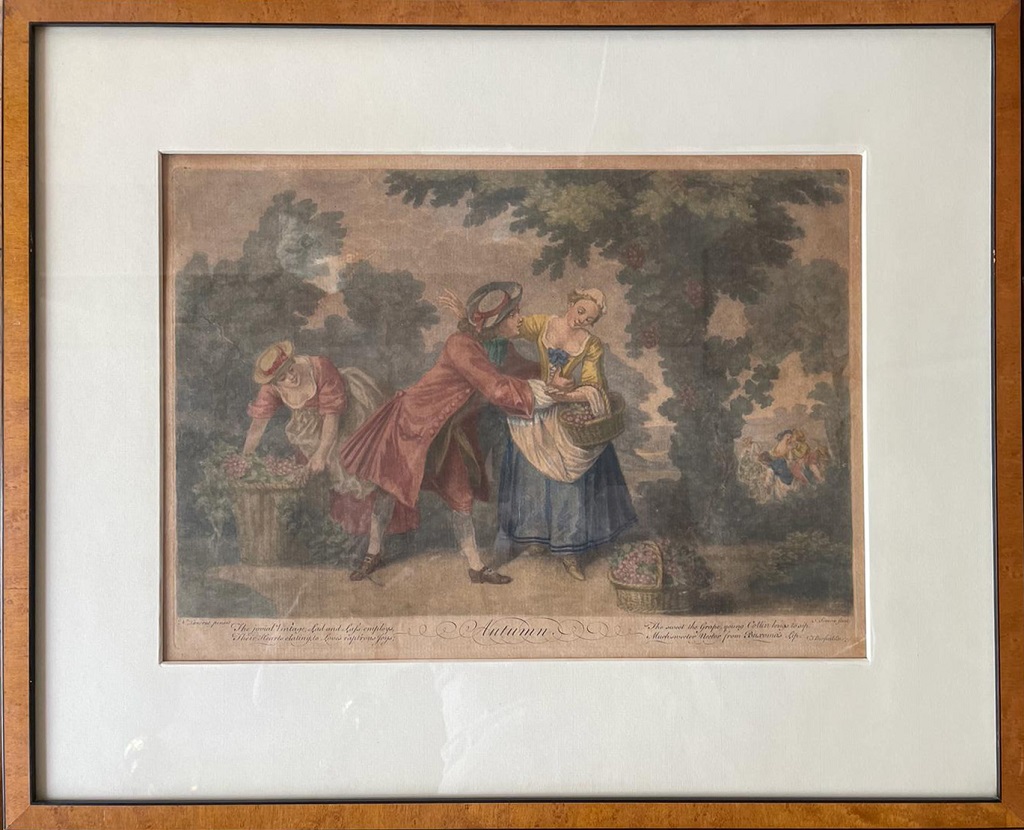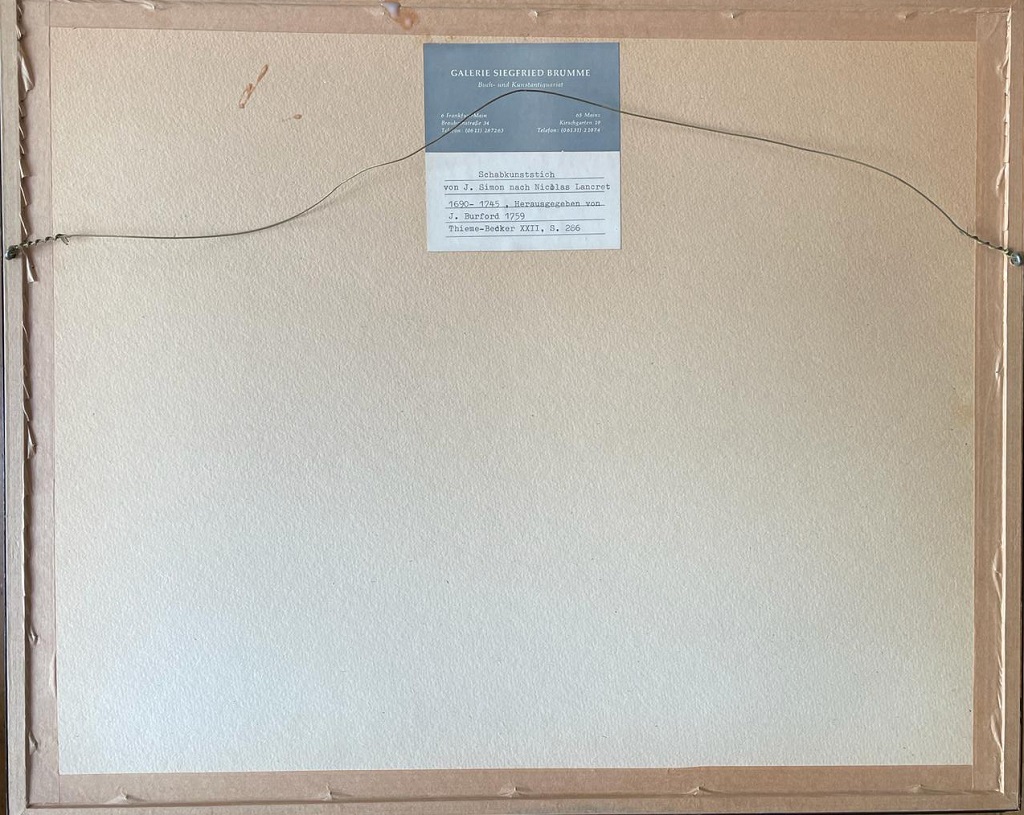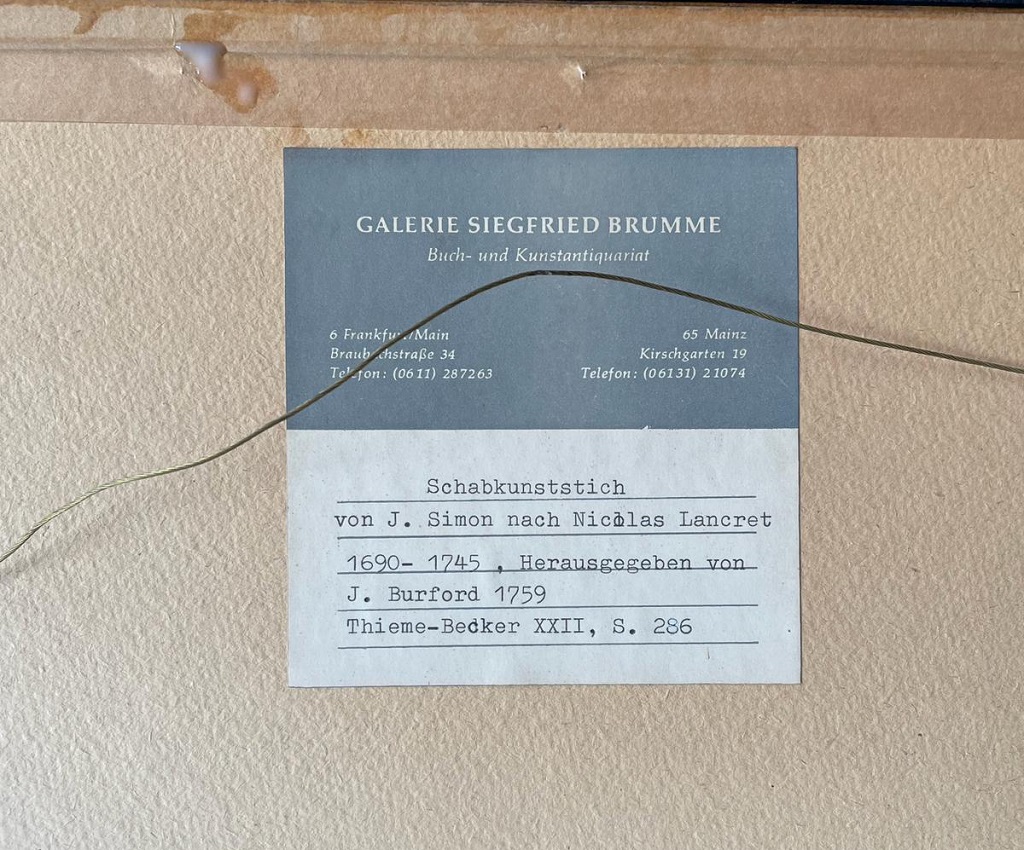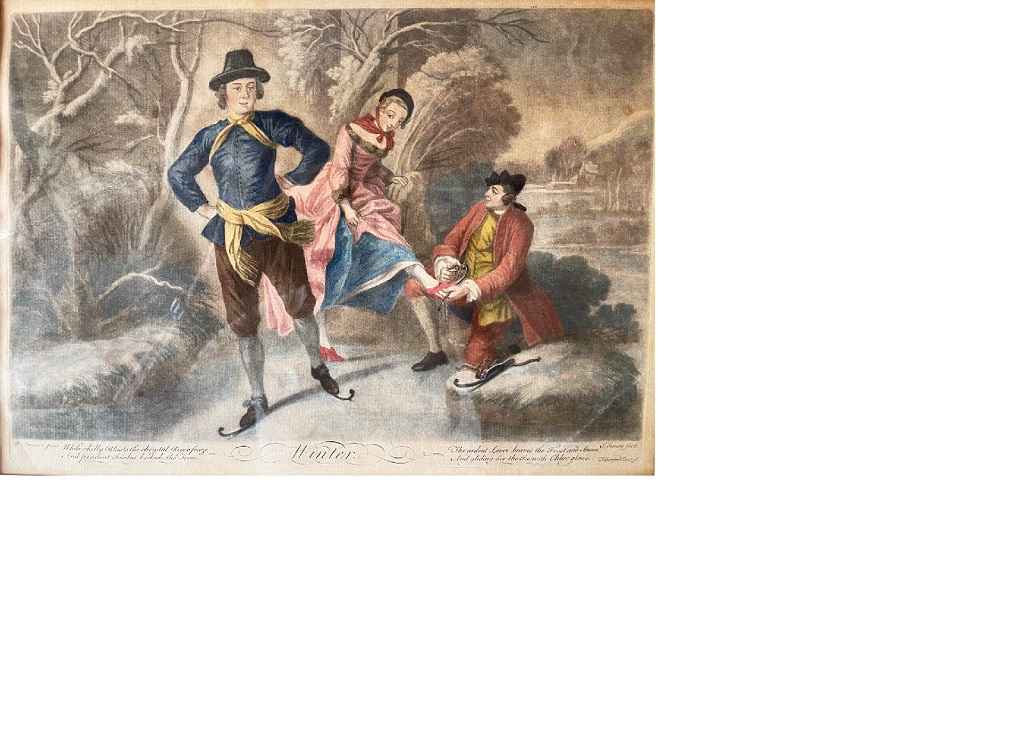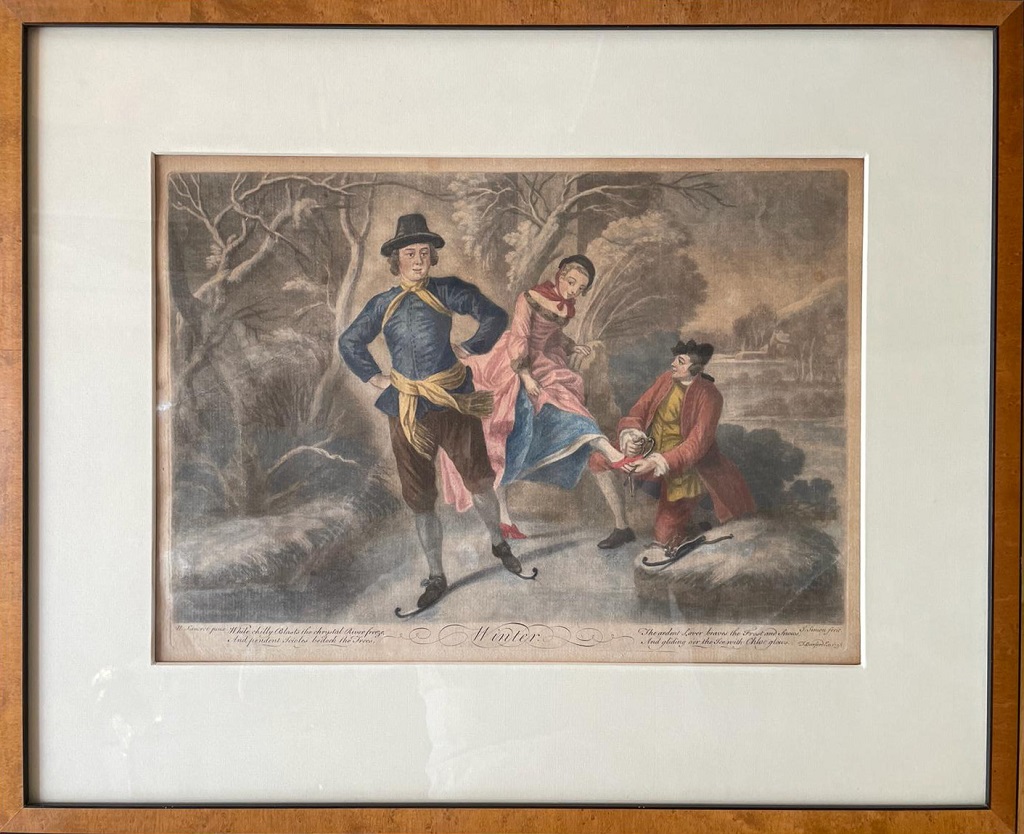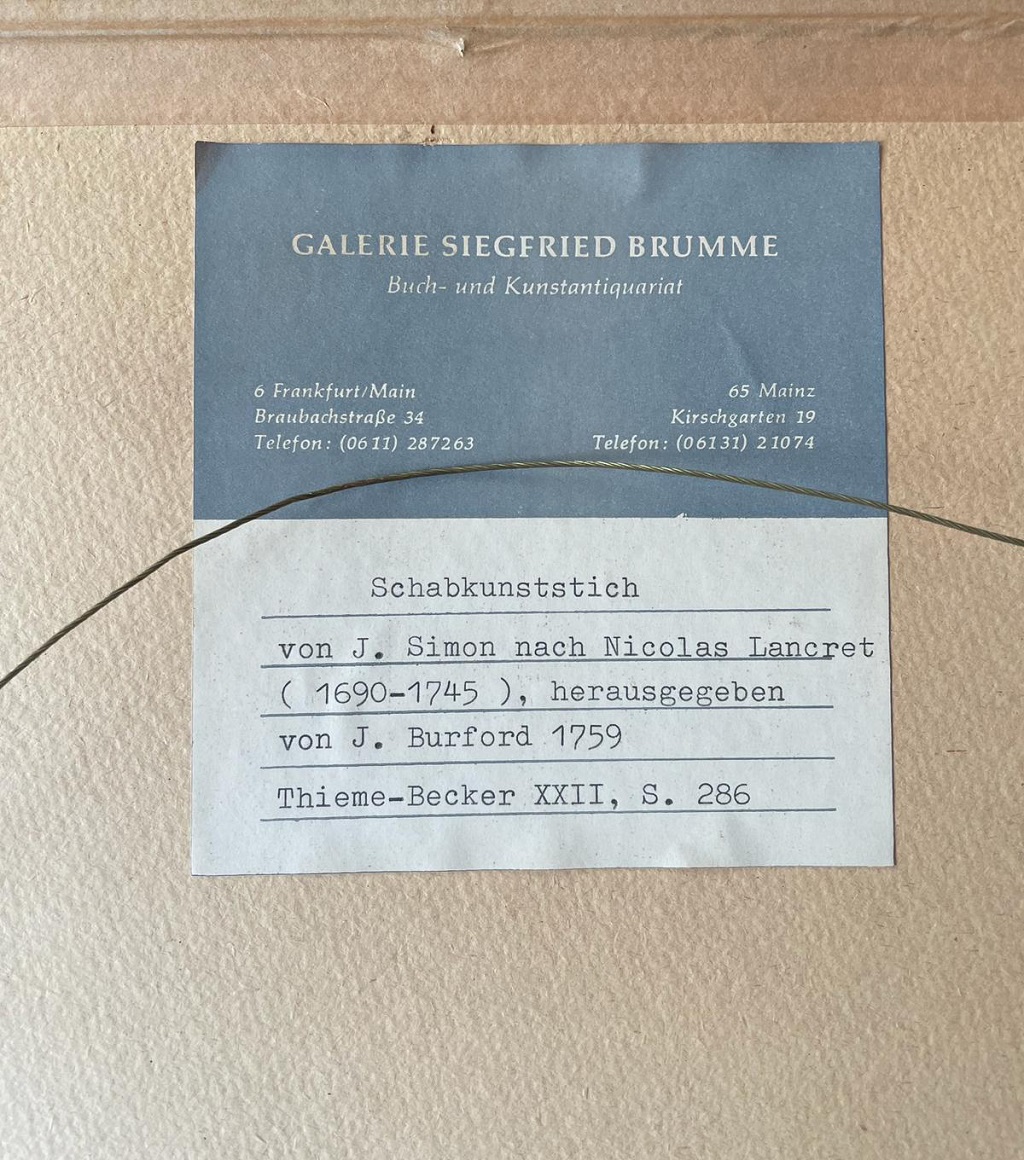Four Seasons pinxet: Nicolas Lancret
Nr. 2553 | 2.500,--€
The four Seasons
Biedermeier
Mezzotint engraving by J.Simon after Nicolas Lancret (1690-1745), published by J.Burford in 1759
Thieme-Becker XXII, p.286
Height: 42 | 25cm | Width: 51.5 | 37cm
Provenance: Formerly Galerie Brumme, private collection Wiesbaden.
No.2553
Euro: 2,500.–
(Differential taxation according to §25a UstG)
The four Seasons
“The Four Seasons” consists of four separate works of art, each representing a season. This series of mezzotint engravings based on Nicolas Lancret’s paintings includes four individual pieces that represent each season individually. Each mezzotint captures the atmosphere, activities and landscapes of a particular season.
Spring: The scene shows an idyllic park-like landscape that represents spring. In the center of the picture is a group of three people, a man flanked by two women. The figures wear everyday rural clothing. The man holds the woman’s shoulder to his left side and seeks physical contact. The woman holds a basket of fruit in her hands and looks at the man behind her. Another woman on the left, presumably a maid, is watering the plants and looking down. In the background on the right you can see a fountain with naked figures hugging each other. These figures look down on the people in the center of the picture. It seems as if they are secretly watching the scene unfolding before them.
Description Spring, labeled below as follows: When vernal Zephyrus and Flora reign, the Nymph with Smiles receives her amorous swain; Who culls for her each Sweet and Flowret gay, as a grateful tribute to the Queen of May.
Summer: The image shows the season of summer and a group of three people standing in a field. Motherless chicks stand in front of the group. A woman stands in the foreground in the center of the picture. She’s wearing a skirt that she lifted up to let out a chick who walked under her skirt. There is a man in front of her. His gaze is focused on what is hidden under her skirt. His eyes are wide open, as if rejoicing at the unexpected event of the raised skirt and curious to see more. Another man stands behind the two people in front. He holds a sickle in his hand and watches what is happening in front of him. It seems as if he has just been interrupted from his work in the field and is approaching the action in front of him.
Description Summer inscribed below as follows: The Reapers Labor through the Field pursuid, Reveals to sight thr Patridg callow Brood; Invain their anxious Mother flutters by for Phillis will the place of Nurse supply
Autumn: The scene shows an autumnal landscape at the time of the grape harvest. In the foreground of the picture there are two people interacting with each other. A man grabs a woman’s waist and tries to pull her towards him. The woman raises her right hand and points backwards into the green and densely vegetated area. On the left side of the picture, another woman bends down to pick up the basket of grapes, with her upper body turned towards the man in front of her and looking at his lower back. In the background of the right side of the picture, individual scenes take place in which couples show their affection for each other away from work.
Description Autumn labeled below as follows: The jovial Vintage, Sad and Safs employs, Their Hearts elating to Love’s rapturous Joys; The sweet the Grape young Collin longs to sip, Much sweeter Nector from Buxoma’s Lip
Winter: The engraving shows a winter landscape in which a group of three people are on a frozen lake. In the foreground of the picture is a man gliding safely across the ice. Behind him are a woman and a man who is probably a servant. The woman rests her foot on the leg of the servant who kneels in front of her and attaches the skate blades to her shoe. The servant looks up at her while the woman looks enthusiastically at the driving skills of the man in front of her.
Description Winter described below as follows: While chilly blasts the chrystal river freeze and pending icicles cover the trees; The ardent Lover braves the Frost and Snows, And gliding over the Ice with Chloe glows
Each mezzotint in this series has its own unique beauty and tells its own story about nature and people at different times of the year. The combination of all four works of art conveys a comprehensive picture of the annual cycle and the different moods that each season brings with it.
What is particularly noticeable in all seasons is the erotic charge of the image content. It seems as if the characters in the pictures follow a hedonistic lifestyle in which the pursuit of pleasure and pleasure is paramount. Contact is sought, whether it is just through looking or through direct physical contact. Women’s clothing, which aims to emphasize their attractiveness, reinforces the image of a superficial relationship dynamic in which appearance and seduction play a central role.
However, there is hardly any mutual interest. It seems like the characters have no real preferences. Your attention shifts to where something interesting appears. The neglect of work and focus on pleasure could be interpreted as a kind of escape from the demands of everyday life, giving the characters a moment of apparent freedom from obligation and responsibility.
Mezzotint
A mezzotint is a printing technique that became popular in Europe in the 18th century. In this technique, a metal plate, often made of copper, is covered with a thin layer of wax or bitumen. A sharp tool is used to carve lines and details into the wax or bitumen to create the desired image. The plate is then etched in an acid solution, deepening the lines. After etching, the plate is covered with printing ink, excess ink is removed, and the plate is pressed onto paper to print the image. Mezzotint engravings are characterized by their fine lines and details and were particularly popular in France and England in the 18th century. Many famous artists created mezzotints based on their own paintings or the works of other artists to make them accessible to a wider audience.
Biedermeier at RSA Wiesbaden
You can find a wide selection of Biedermeier furniture and decorative art pieces.
Regine Schmitz-Avila – your Biedermeier specialist for cabinets, tables, and chests.
